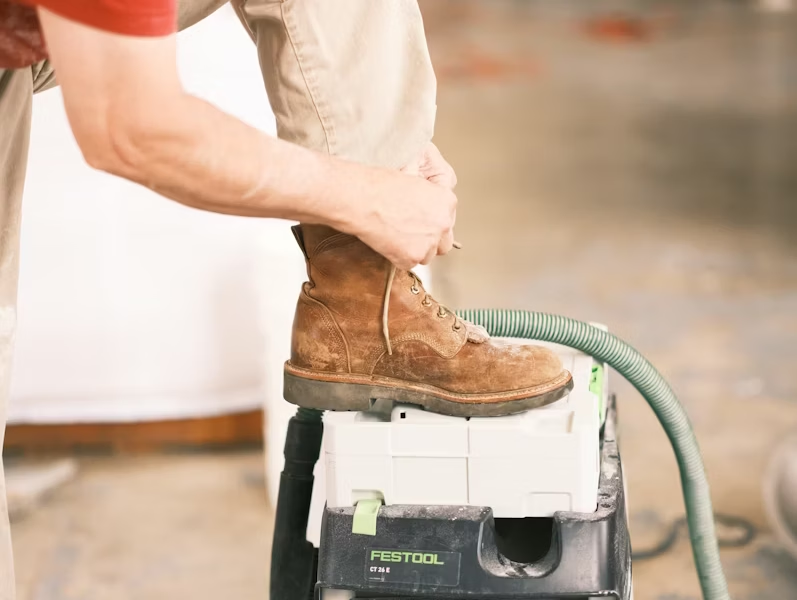Technology Changing the Standards of Home Repair Services

The introduction of smart devices, mobile apps, and sophisticated diagnostic tools has improved the efficiency of these services and elevated customer expectations. Modern homeowners seek convenience, transparency, and quick solutions. Each of these technological changes shapes the way repair professionals operate and interact with their clients.
As we explore the intersection of technology and home repair services, it’s clear that these innovations are redefining industry standards for a more effective and responsive service terrain.
Adoption of Smart Technologies
Homeowners are now equipping their residences with smart appliances that require regular maintenance and repair. This necessitates that repair professionals become familiar with smart technologies and improve their service offerings. From smart thermostats to connected plumbing fixtures, there is a growing need for technicians who can troubleshoot complex, digitally integrated systems.
With the help of mobile applications, service providers can monitor appliance statuses remotely and send a technician when needed or even guide the homeowner through basic troubleshooting strategies. Plumbing, heating, AC, and electrical professionals like Landry Mechanical can leverage these technologies to streamline operations and reduce unnecessary service calls. These professionals address current needs and anticipate future demands in home repair services.
Remote Assistance and Diagnostic Tools
Sophisticated apps enable technicians to conduct preliminary assessments from a distance to solve simple problems without the need for an on-site visit. These tools facilitate quick fixes and provide service histories, which can help technicians make informed decisions before they even arrive at a homeowner’s door.
These solutions allow technicians to visualize complex problems and offer guidance through a smartphone or tablet screen. A technician can use augmented reality to visualize the inner workings of a heating system, helping identify issues at a faster rate. This efficiency benefits technicians and improves customer satisfaction. Remote assistance technologies are becoming assets in the home repair service industry.
Customer Experience through Technology
Service companies are using online platforms and mobile applications so that homeowners to book appointments, track service progress, and communicate directly with technicians. These applications provide transparency, allowing customers to receive real-time updates and notifications throughout the service process. Customer reviews and ratings give potential clients insight into a company’s reliability before hiring.
Advanced scheduling algorithms optimize service routes for technicians, resulting in faster response times and increased efficiency. Clients are more likely to be satisfied with their service providers, influencing their decisions in future repair needs. A focus on technology translates into tangible benefits for customer interaction within the home repair services sector.
Workforce Training and Development
Technicians now require continuous training to stay up to date with the latest tools and technologies. Many organizations have begun integrating technology into training programs so that their staff remains competent. Virtual learning environments and online workshops can facilitate access to important learning resources, making training more flexible and accommodating.
These educational approaches help technicians master specific skills so that they are equipped to handle modern appliance repairs and installations. Companies that prioritize ongoing education enable their workforce to be proficient and confident, leading to better service delivery.
Impact on Pricing and Business Models
With increased operational efficiency resulting from technological innovation, many companies can lower costs and pass those savings on to consumers. Advanced estimation tools help professionals provide accurate quotes. Dynamic pricing models are emerging to adjust their rates based on supply, demand, and real-time market conditions. Businesses and consumers reflect true market values. Homeowners enjoy fairer prices and improved service experiences.
Subscription-based models are becoming more common, where clients pay a monthly fee for routine maintenance services, removing unexpected repair costs as the need arises. The influence of technology on business models is reshaping how services are delivered and consumed.
Safety Considerations in Home Repairs
The incorporation of technology into home repair services improves safety measures for homeowners and technicians. Tools equipped with sensors and IoT technology can monitor various systems, alerting users to potential hazards before they escalate into serious problems. This preventive approach reduces the risk of accidents, whether related to electrical issues, heating malfunctions, or plumbing leaks.
Using advanced software can comply with safety protocols so that technicians follow industry standards during service calls. Training programs emphasize safety procedures related to emerging technologies and provide the necessary knowledge for technicians and customers. Improved safety measures protect individuals on the job site and instill greater confidence among homeowners regarding the reliability and professionalism of the services provided. These advancements serve to build a culture of safety in the home repair industry.

The synergy between technology and home repair services results in advancements that improve efficiency, customer satisfaction, and safety standards. Professionals armed with modern tools and insights are better positioned to meet consumer demands. By staying informed and adapting to these changes, service providers can thrive in the environment.

Source: Technology Changing the Standards of Home Repair Services




